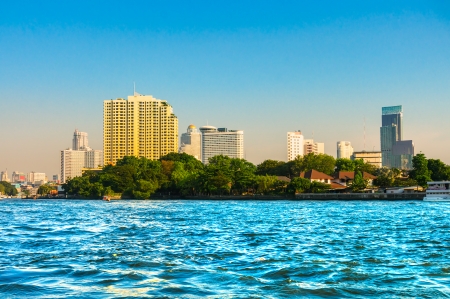Understanding Standard Landlord Insurance
If you own rental property in the United States, chances are you’ve already purchased landlord insurance to protect your investment. But when it comes to natural disasters like earthquakes, floods, and hurricanes, are you actually covered? To answer that, let’s first break down what a typical landlord insurance policy actually covers—and clear up some of the most common misconceptions about protection against Mother Nature’s worst.
Standard landlord insurance policies—sometimes called “dwelling fire” or “rental property” insurance—are designed to safeguard your property against specific risks. These usually include things like fire, lightning strikes, theft, vandalism, and certain types of accidental water damage (like a burst pipe). They also typically provide liability coverage if someone gets injured on your property and sues you.
However, it’s crucial to understand that most standard landlord insurance policies do not automatically cover major natural disasters such as earthquakes, floods, or hurricanes. Many landlords assume their policy is an all-in-one safety net, but in reality, protection for these catastrophic events often requires additional coverage or separate policies altogether. This misunderstanding can lead to costly surprises after disaster strikes.
In the next sections, we’ll dive deeper into how these exclusions work and what steps you need to take to make sure your rental property is truly protected from nature’s most destructive forces.
Earthquakes: Are You Covered?
When it comes to landlord insurance, many property owners are surprised to learn that standard policies usually do not cover earthquake damage. In fact, earthquakes are one of the most commonly excluded natural disasters in typical landlord or homeowner insurance plans. If you live in an area where earthquakes are a risk, understanding your actual coverage is crucial.
Why Are Earthquakes Excluded?
Insurance companies generally exclude earthquakes from standard policies because the potential losses can be catastrophic and widespread. Covering these risks would significantly raise premiums for everyone, even those far from any seismic activity. That’s why if you want protection specifically for earthquake damage, you’ll need a separate policy known as earthquake insurance.
What Does Earthquake Insurance Look Like?
Earthquake insurance is typically sold as an add-on (endorsement) to your existing landlord policy or as a stand-alone policy. Here’s a quick comparison:
| Standard Landlord Insurance | Add-On Earthquake Coverage | Standalone Earthquake Policy | |
|---|---|---|---|
| Earthquake Damage | No coverage | Covers earthquake-related damage | Covers earthquake-related damage |
| Cost | Included in base premium | Added to base premium | Separate premium |
| Deductible | N/A for earthquakes | Often higher than standard deductible | Often higher than standard deductible |
| Availability | Nationwide but no quake coverage | Mainly in high-risk states | Mainly in high-risk states |
Where Is This Most Relevant in the U.S.?
Certain regions in the United States face a much higher risk of earthquakes. Here are some key areas where considering earthquake insurance makes the most sense:
- California: The most earthquake-prone state due to major fault lines like the San Andreas Fault.
- Pacific Northwest: Including Washington and Oregon, which sit along the Cascadia Subduction Zone.
- MIDWEST & SOUTH: Areas around the New Madrid Seismic Zone (Missouri, Tennessee, Arkansas) also experience significant seismic activity.
- Alaska: Has more earthquakes than any other state, including large magnitude events.
The Bottom Line for Landlords
If your rental property is located in or near any of these high-risk areas, it’s important to talk with your insurance agent about adding earthquake coverage. Don’t assume your current policy has you covered—read the fine print and consider whether dedicated earthquake insurance is worth the investment for your peace of mind and financial security.

3. Flood Risks and Coverage Gaps
When it comes to landlord insurance, many property owners assume that their standard policy will cover them for most natural disasters—including floods. However, this is a big misconception. Flood damage is almost never included in basic landlord insurance policies. This exclusion leaves landlords vulnerable, especially in areas prone to flooding.
Understanding Flood Exclusions
Most landlord or rental property insurance policies specifically exclude flood-related losses. That means if your property suffers water damage from rising rivers, heavy rains, or storm surges, you’re likely on your own financially unless you have additional coverage. Insurance companies typically consider “flood” as any excessive water on normally dry land that affects at least two properties or two acres of land.
High-Risk Flood Regions in the U.S.
The risk isn’t limited to coastal states like Florida, Texas, or Louisiana—though these are high-profile examples due to hurricanes and tropical storms. Even inland regions can face serious flood threats from overflowing rivers or rapid snowmelt. According to FEMA, just one inch of floodwater can cause up to $25,000 in damage, making this a nationwide concern for landlords.
Filling the Gap: The National Flood Insurance Program (NFIP)
If your property is located in a flood-prone area—or if you simply want peace of mind—the best solution is purchasing separate flood insurance. The National Flood Insurance Program (NFIP), managed by FEMA, offers affordable policies designed specifically to cover flood damage. Many private insurers also offer supplemental flood policies. While these plans come with their own terms and limits, they are essential for true protection against one of the most common and costly natural disasters in the U.S.
In short, don’t assume your existing coverage has you protected when it comes to floods. Review your policy carefully and consider specialized flood insurance—especially if your rental is in a high-risk zone.
4. Hurricanes and Related Damages
For landlords, especially those with properties along the Gulf Coast or Atlantic seaboard, hurricanes are a real threat every year. But when it comes to insurance, not all hurricane-related damages are treated equally. Most standard landlord insurance policies cover wind damage from hurricanes—think broken windows, damaged roofs, or fallen trees that hit the building. However, water damage caused by flooding (including storm surge) is typically not covered under a standard policy and requires separate flood insurance.
What’s Usually Covered vs. What’s Not
| Type of Damage | Typically Covered? | Policy Type Needed |
|---|---|---|
| Wind Damage (e.g., roof, siding) | Yes | Landlord Insurance |
| Rain entering after wind damages property | Yes | Landlord Insurance |
| Flooding/Storm Surge | No | Separate Flood Insurance (NFIP or private) |
| Mold from unrepaired water damage | No/Partial | May require endorsements or riders |
Separate Deductibles and Exclusions Matter
A key thing to watch out for: hurricane deductibles are often higher than regular deductibles and may be based on a percentage of your property’s insured value (not just a flat dollar amount). For example, if your rental home is insured for $300,000 and you have a 5% hurricane deductible, you’d pay $15,000 out of pocket before insurance kicks in after a hurricane. Additionally, some policies might exclude certain windstorm or water-related damages entirely, especially in high-risk coastal areas.
Why Landlords in Coastal States Need to Pay Attention
If you own property in states like Florida, Texas, Louisiana, or the Carolinas, making sure you have proper coverage isn’t just smart—it’s essential. Without adequate hurricane and flood protection, a single storm could lead to devastating financial loss. Always check your policy details for special hurricane deductibles and exclusions, and seriously consider adding flood insurance if you’re anywhere near the coast or a flood-prone area.
5. Additional Protections You Might Need
Even if you have basic landlord insurance, natural disasters can expose gaps in your coverage that might leave you vulnerable. To truly safeguard your investment, it’s smart to consider extra insurance options that address specific risks commonly overlooked by standard policies. Here are some supplemental coverages American landlords often find essential:
Loss of Rental Income Coverage
If your property becomes uninhabitable after a disaster like an earthquake, hurricane, or flood, loss of rental income coverage can help replace the rent you would have received while repairs are underway. This protection is crucial for landlords who rely on monthly rent payments to cover mortgage costs and other expenses.
Mold Remediation Endorsement
Mold can become a serious issue following water-related disasters—think hurricanes or flooding—and most standard landlord policies either limit or exclude mold-related damage. Adding a mold remediation endorsement ensures you’re covered for both removal and repair, helping prevent costly out-of-pocket expenses and keeping your property safe for tenants.
Sewer Backup Insurance
Natural disasters can overwhelm municipal sewer systems, leading to backups that cause significant damage to your property’s interior. Sewer backup insurance covers cleanup and repair costs associated with these incidents, which aren’t typically included in standard landlord insurance plans.
Other Optional Coverages
- Earthquake Endorsement: Earthquakes are not covered under most standard landlord policies. If you’re in a high-risk area, adding this protection is a must.
- Flood Insurance: Standard insurance won’t protect against flood damage—federal flood insurance or private flood policies fill this gap.
- Ordinance or Law Coverage: After major disasters, local building codes may require costly upgrades during repairs. This coverage helps pay for those improvements so you’re not stuck footing the bill.
Takeaway for Landlords
No single policy can cover every scenario. By understanding these additional protections and discussing them with your insurance agent, you can build a more complete safety net against the unpredictable realities of natural disasters in the U.S.
6. Tips for U.S. Landlords: How to Ensure You’re Fully Protected
If you’re a landlord in the U.S., it’s crucial to take proactive steps to make sure your property insurance truly covers you against the unique risks posed by natural disasters like earthquakes, floods, and hurricanes. Here are some practical tips to help you navigate the process and feel confident that you’re not leaving any gaps in your coverage.
Review Your Current Insurance Policies Regularly
Start by reading through your existing landlord insurance policies with a critical eye. Don’t just look at the premium or deductible—make sure you understand exactly what types of natural disasters are covered and which are excluded. Many standard policies do not automatically include earthquake or flood coverage, so don’t assume you’re protected without double-checking the fine print.
Key Questions to Ask:
- Does my policy cover damage from all common natural disasters in my area?
- Are there any exclusions or limits I should be aware of?
- What is my responsibility versus what is covered by insurance?
Work with Local Insurance Agents Who Understand Your Area
Insurance isn’t one-size-fits-all, especially when it comes to natural disasters. Partner with a local insurance agent who knows your region’s specific risks—whether that’s California earthquakes, Gulf Coast hurricanes, or Midwest flooding. Local agents can help you identify coverage gaps and recommend specialized add-ons or endorsements that national companies might overlook.
Benefits of Working with Local Experts:
- Up-to-date knowledge on regional risk factors
- Personalized advice tailored to your property location
- Assistance with claims based on local disaster history
Tailor Your Coverage Based on Location-Specific Risks
Every state—and often every city—faces different threats from Mother Nature. Use tools like FEMA flood maps and state geological surveys to determine what hazards are most likely in your area. Then, customize your insurance package accordingly. For example, if your rental property is near a river or coastline, flood insurance is a must; if it’s in tornado alley, consider windstorm riders; for California landlords, earthquake protection is non-negotiable.
Pro Tip: Bundle Policies When Possible
Bundling multiple types of coverage (like property, liability, and disaster-specific riders) with one insurer may save you money and simplify the claims process if disaster strikes.
Stay Informed and Update Regularly
The risks associated with climate change are evolving, and so are insurance products. Schedule annual check-ins with your agent to review your policy as well as any changes in local building codes or disaster predictions. Being proactive ensures you’re never caught off guard—and that you can protect both your investment and your tenants no matter what nature throws your way.


